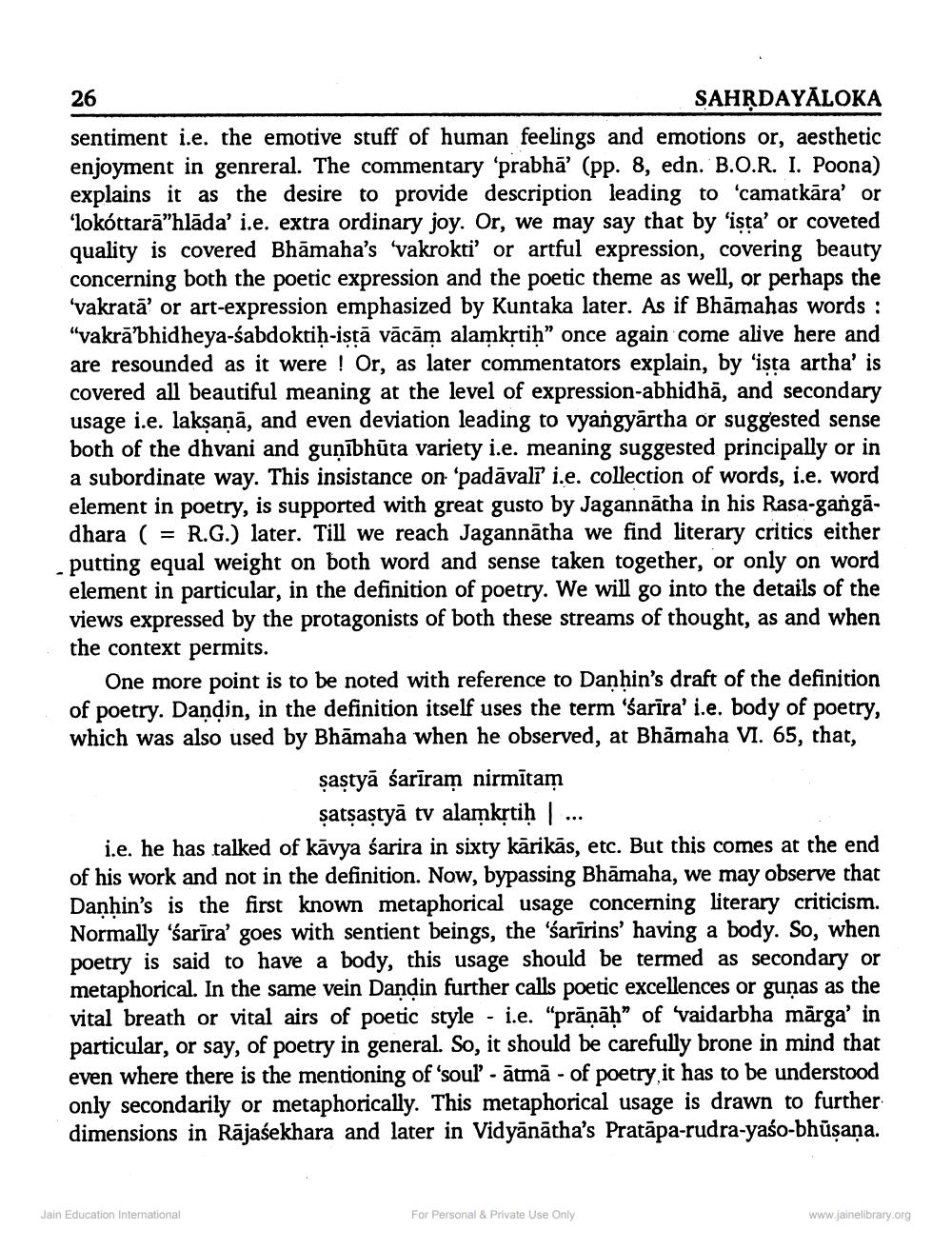________________
26
SAHRDAYĀLOKA sentiment i.e. the emotive stuff of human feelings and emotions or, aesthetic enjoyment in genreral. The commentary ‘prabhā' (pp. 8, edn. B.O.R. I. Poona) explains it as the desire to provide description leading to 'camatkāra' or 'lokóttarā"hlāda' i.e. extra ordinary joy. Or, we may say that by 'ista' or coveted quality is covered Bhāmaha's 'vakrokti' or artful expression, covering beauty concerning both the poetic expression and the poetic theme as well, or perhaps the 'vakratā' or art-expression emphasized by Kuntaka later. As if Bhāmahas words : "vakrā bhidheya-śabdoktih-istā vācām alamkrtih” once again come alive here and are resounded as it were ! Or, as later commentators explain, by 'ista artha' is covered all beautiful meaning at the level of expression-abhidhā, and secondary usage i.e. laksaņā, and even deviation leading to vyangyārtha or suggested sense both of the dhvani and guņābhūta variety i.e. meaning suggested principally or in a subordinate way. This insistance on 'padāvali i.e. collection of words, i.e. word element in poetry, is supported with great gusto by Jagannātha in his Rasa-gangādhara ( = R.G.) later. Till we reach Jagannātha we find literary critics either putting equal weight on both word and sense taken together, or only on word element in particular, in the definition of poetry. We will go into the details of the views expressed by the protagonists of both these streams of thought, as and when the context permits.
One more point is to be noted with reference to Danhin's draft of the definition of poetry. Dandin, in the definition itself uses the term 'śarira' i.e. body of poe which was also used by Bhāmaha when he observed, at Bhamaha VI. 65, that,
șaștyā śarīram nirmītam
şatşaștyā tv alamkrtiḥ | ... i.e. he has talked of kāvya sarira in sixty karikās, etc. But this comes at the end of his work and not in the definition. Now, bypassing Bhāmaha, we may observe that Danhin's is the first known metaphorical usage concerning literary criticism. Normally 'śarīra' goes with sentient beings, the 'śarīrins' having a body. So, when poetry is said to have a body, this usage should be termed as secondary or metaphorical. In the same vein Dandin further calls poetic excellences or gunas as the vital breath or vital airs of poetic style - i.e. "prāņāḥ" of vaidarbha märga' in particular, or say, of poetry in general. So, it should be carefully brone in mind that even where there is the mentioning of 'soul - ātmā - of poetry, it has to be understood
secondarily or metaphorically. This metaphorical usage is drawn to further dimensions in Rājasekhara and later in Vidyānātha's Pratāpa-rudra-yaśo-bhūsana.
Jain Education International
For Personal & Private Use Only
www.jainelibrary.org




